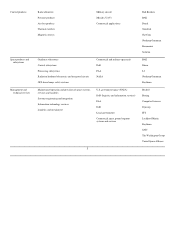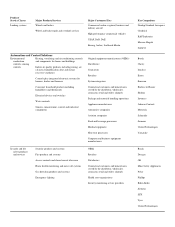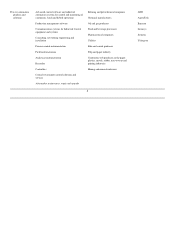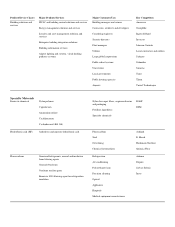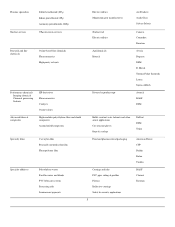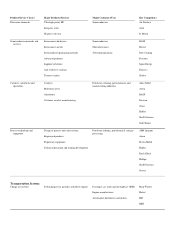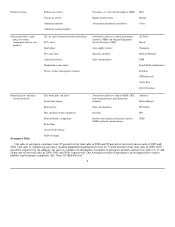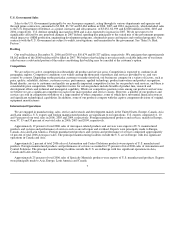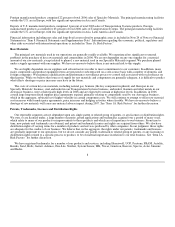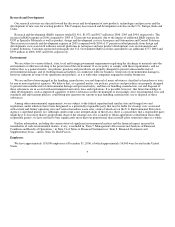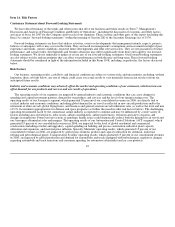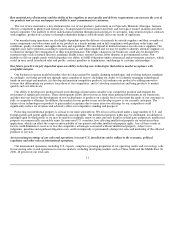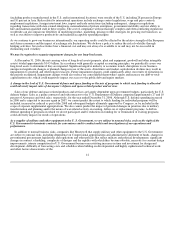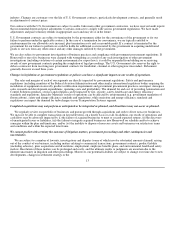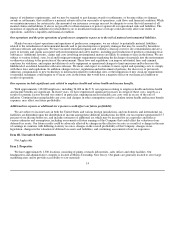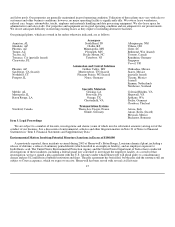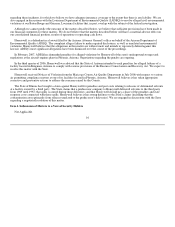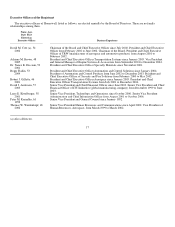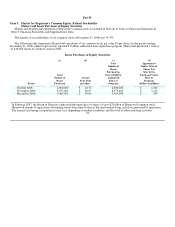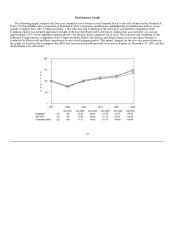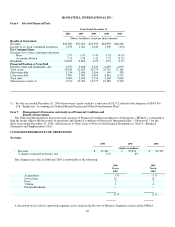Honeywell 2006 Annual Report Download - page 20
Download and view the complete annual report
Please find page 20 of the 2006 Honeywell annual report below. You can navigate through the pages in the report by either clicking on the pages listed below, or by using the keyword search tool below to find specific information within the annual report.
Item 1A. Risk Factors
Cautionary Statement about Forward-Looking Statements
We have described many of the trends and other factors that drive our business and future results in “Item 7. Management's
Discussion and Analysis of Financial Condition and Results of Operations”, including the discussion of economic and other factors
and areas of focus for 2007 for the Company and/or each of our segments. These sections and other parts of this report (including this
Item 1A) contain “forward-looking statements” within the meaning of Section 21E of the Securities Exchange Act of 1934.
Forward-looking statements are those that address activities, events or developments that management intends, expects, projects,
believes or anticipates will or may occur in the future. They are based on management's assumptions and assessments in light of past
experience and trends, current conditions, expected future developments and other relevant factors. They are not guarantees of future
performance, and actual results, developments and business decisions may differ significantly from those envisaged by our forward-
looking statements. We do not undertake to update or revise any of our forward-looking statements. Our forward-looking statements
are also subject to risks and uncertainties that can affect our performance in both the near-and long-term. These forward-looking
statements should be considered in light of the information included in this Form 10-K, including, in particular, the factors discussed
below.
Risk Factors
Our business, operating results, cash flows and financial condition are subject to various risks and uncertainties, including, without
limitation, those set forth below, any one of which could cause our actual results to vary materially from recent results or from our
anticipated future results.
Industry and economic conditions may adversely affect the market and operating conditions of our customers, which in turn can
affect demand for our products and services and our results of operations.
The operating results of our segments are impacted by general industry and economic conditions that can cause changes in
spending and capital investment patterns, demand for our products and services and the level of our manufacturing costs. The
operating results of our Aerospace segment, which generated 35 percent of our consolidated revenues in 2006, are directly tied to
cyclical industry and economic conditions, including global demand for air travel as reflected in new aircraft production and/or the
retirement of older aircraft, global flying hours, and business and general aviation aircraft utilization rates, as well as the level and mix
of U.S. Government appropriations for defense and space programs (as further discussed in other risk factors below). The challenging
operating environment faced by the commercial airline industry is expected to continue and may be influenced by a wide variety of
factors including aircraft fuel prices, labor issues, airline consolidation, airline insolvencies, terrorism and safety concerns, and
changes in regulations. Future terrorist actions or pandemic health issues could dramatically reduce both the demand for air travel and
our Aerospace aftermarket sales and margins. The operating results of our Automation and Control Solutions (ACS) segment, which
generated 35 percent of our consolidated revenues in 2006, are impacted by the level of global residential and commercial
construction (including retrofits and upgrades), capital spending on building and process automation, industrial plant capacity
utilization and expansion, and material price inflation. Specialty Materials' operating results, which generated 15 percent of our
consolidated revenues in 2006, are impacted by global gross domestic product and capacity utilization for chemical, industrial,
refining and petrochemical plants. Transportation Systems' operating results, which generated 15 percent of our consolidated revenues
in 2006, are impacted by global production and demand for automobiles and trucks equipped with turbochargers, regulatory changes
regarding automobile and truck emissions and consumer spending for automotive aftermarket and car care products.
10


